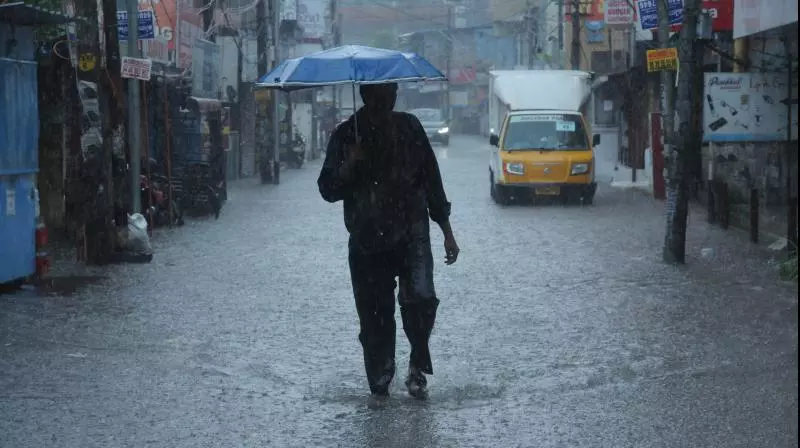India Recorded Below Normal Rainfall in June: IMD

IMD on Monday said India recorded below-normal rainfall in June, with the deficit standing at 11 per cent, the highest in five years. (File Photo)
New Delhi: India recorded below-normal rainfall in June, with the deficit standing at 11 per cent, the highest in five years, the India Meteorological Department said on Monday. According to the IMD data, the country received 147.2 mm of rainfall against a normal of 165.3 mm for the month, the seventh lowest since 2001.
June rainfall accounts for 15 per cent of the total precipitation of 87 cm recorded during the four-month monsoon season in the country. After making an early onset over Kerala and the northeastern region on May 30, and progressing normally up to Maharashtra, the monsoon lost momentum, extending the wait for rains in West Bengal, Odisha, Jharkhand, Bihar, Chhattisgarh, Madhya Pradesh, and Uttar Pradesh, and worsening the impact of a scorching heat wave in northwest India.
"The country recorded 16 days of below-normal rainfall activity -- from June 11 to June 27 -- which led to overall below-normal precipitation," IMD chief Mrutyunjay Mohapatra said. The IMD reported that northwest India recorded a 33 per cent rainfall deficit, central India a 14 per cent deficit, and east and northeast India a 13 per cent deficit. Only south India recorded surplus rains (14 per cent) in June.
The Met office stated that 12 per cent of the sub-divisional area of the country experienced excess to large excess rainfall, 38 per cent received normal rainfall, and 50 per cent experienced deficient to large deficient rainfall. IMD data shows that in 20 out of the 25 years when June rainfall was below normal (less than 92 per cent of the long-period average), July rainfall was normal (94-106 per cent of LPA) or above normal.
In 17 of the 25 years when June rainfall was below normal, the seasonal rainfall was normal or above normal, it said. The IMD had earlier forecast above-normal rainfall during the monsoon season in India, with cumulative precipitation estimated at 106 per cent of the long-period average of 87 cm.
Below-normal monsoon rainfall is expected in northeast India, normal in the northwest, and above-normal in central and south peninsular regions of the country, it said. India's core monsoon zone, covering most of the rain-fed agricultural areas in the country, is predicted to receive above-normal rainfall this season, the Met office said.
The monsoon is critical for India's agricultural landscape, with 52 per cent of the net cultivated area relying on it. It is also crucial for replenishing reservoirs critical for drinking water and power generation across the country.
June and July are considered the most important monsoon months for agriculture, as most of the sowing for the Kharif crop takes place during this period. El Nino conditions are prevailing at present, and La Nina may set in by August-September, scientists have said.
El Nino, the periodic warming of surface waters in the central Pacific Ocean, is associated with weaker monsoon winds and drier conditions in India. La Nina, the antithesis of El Nino, leads to plentiful rainfall during the monsoon season.
( Source : PTI )
Next Story

